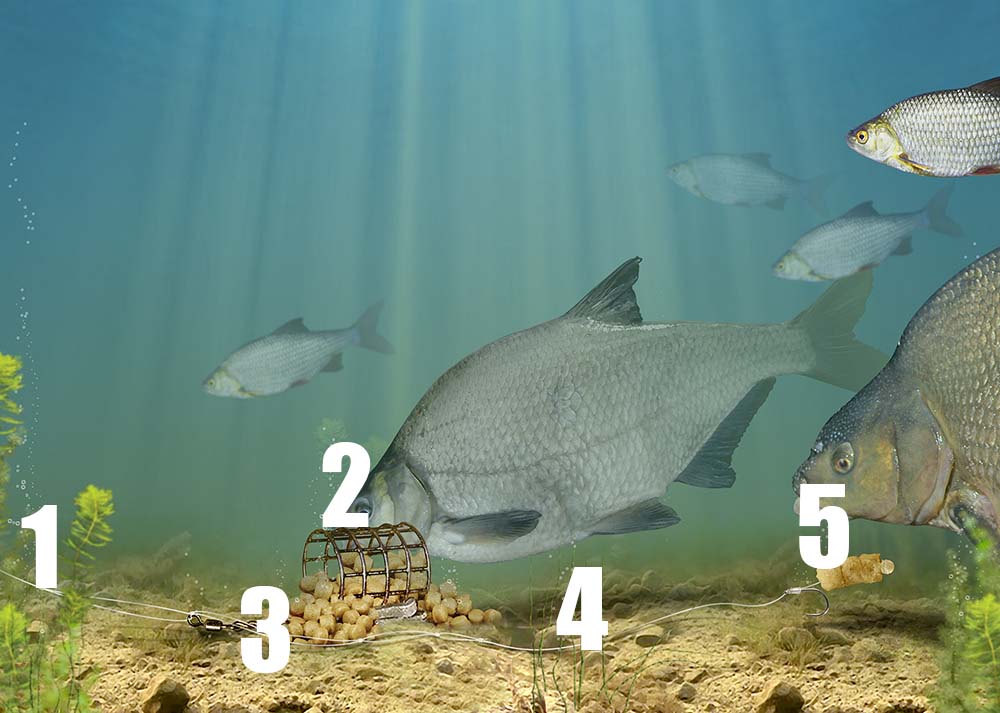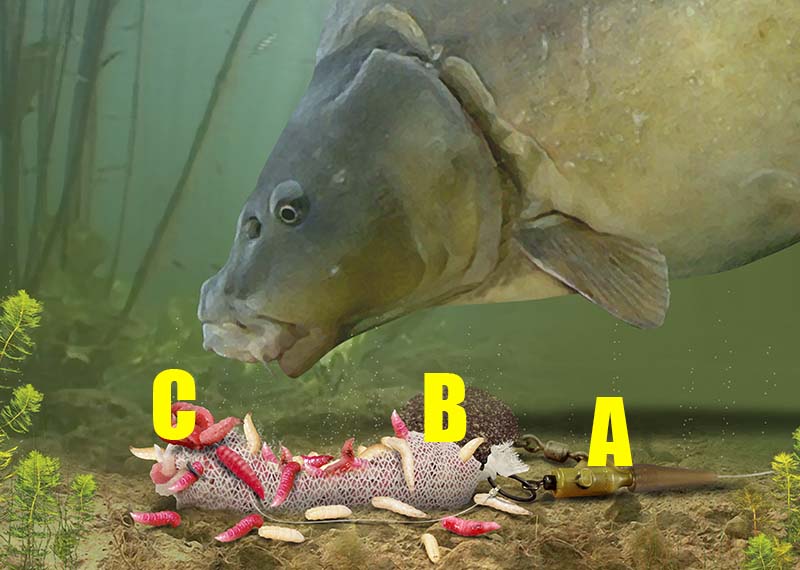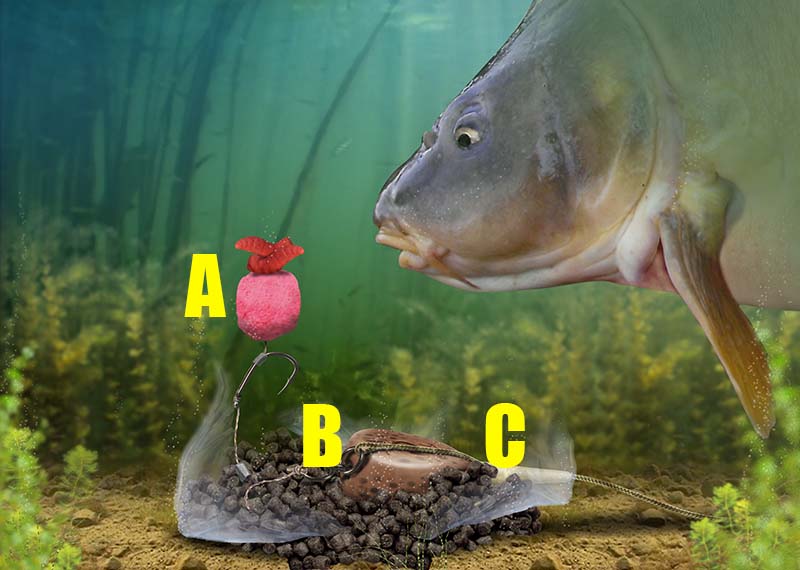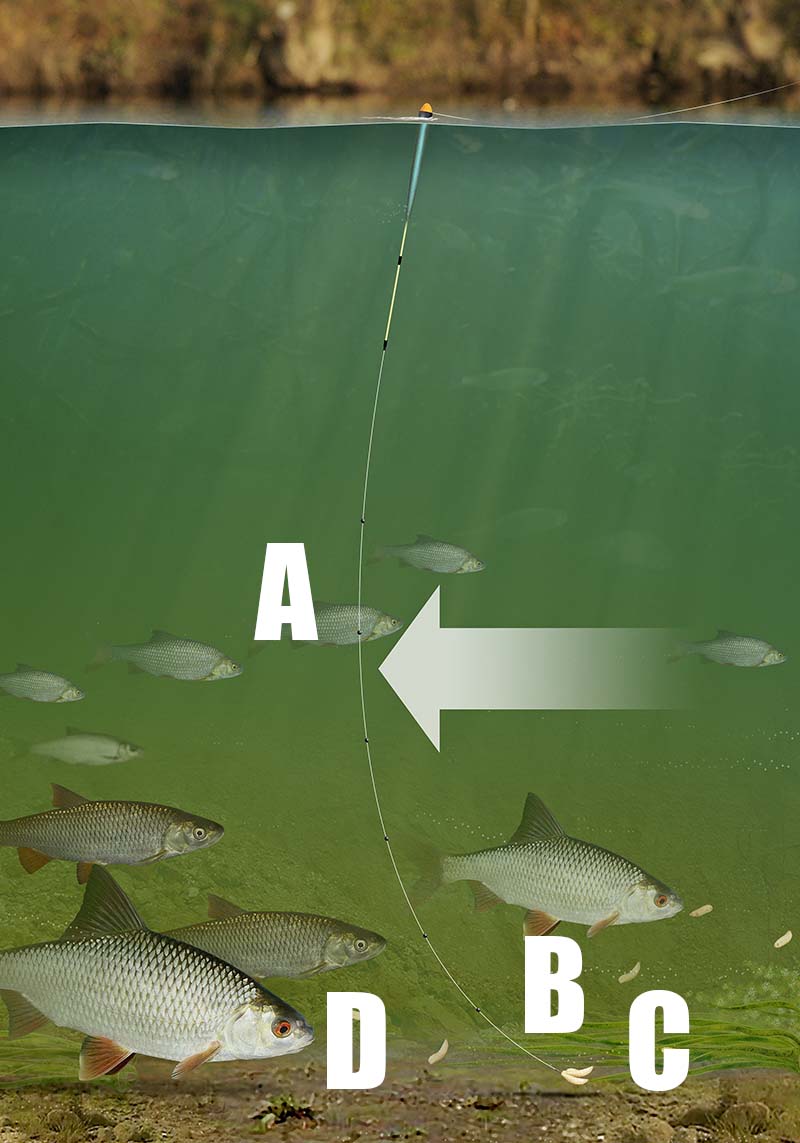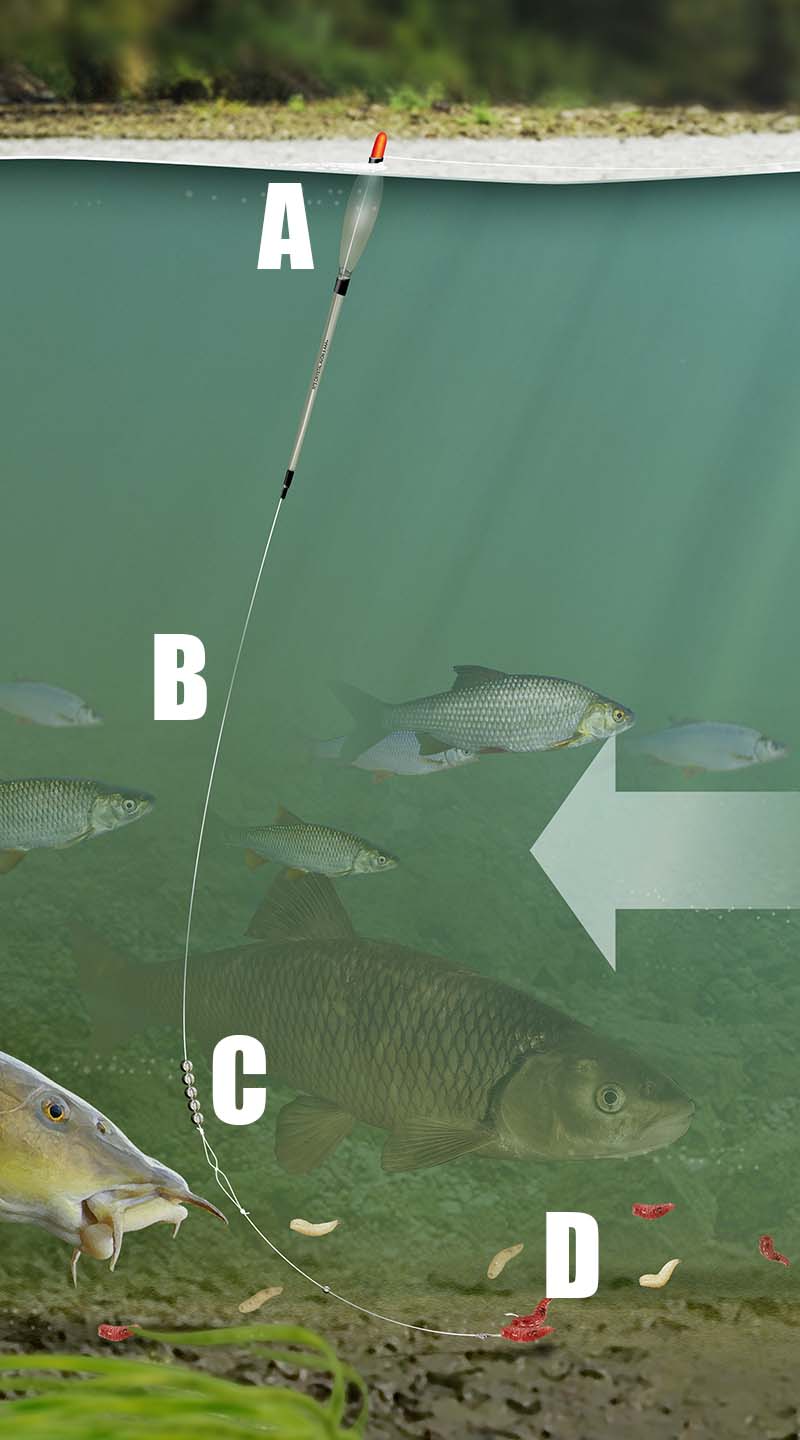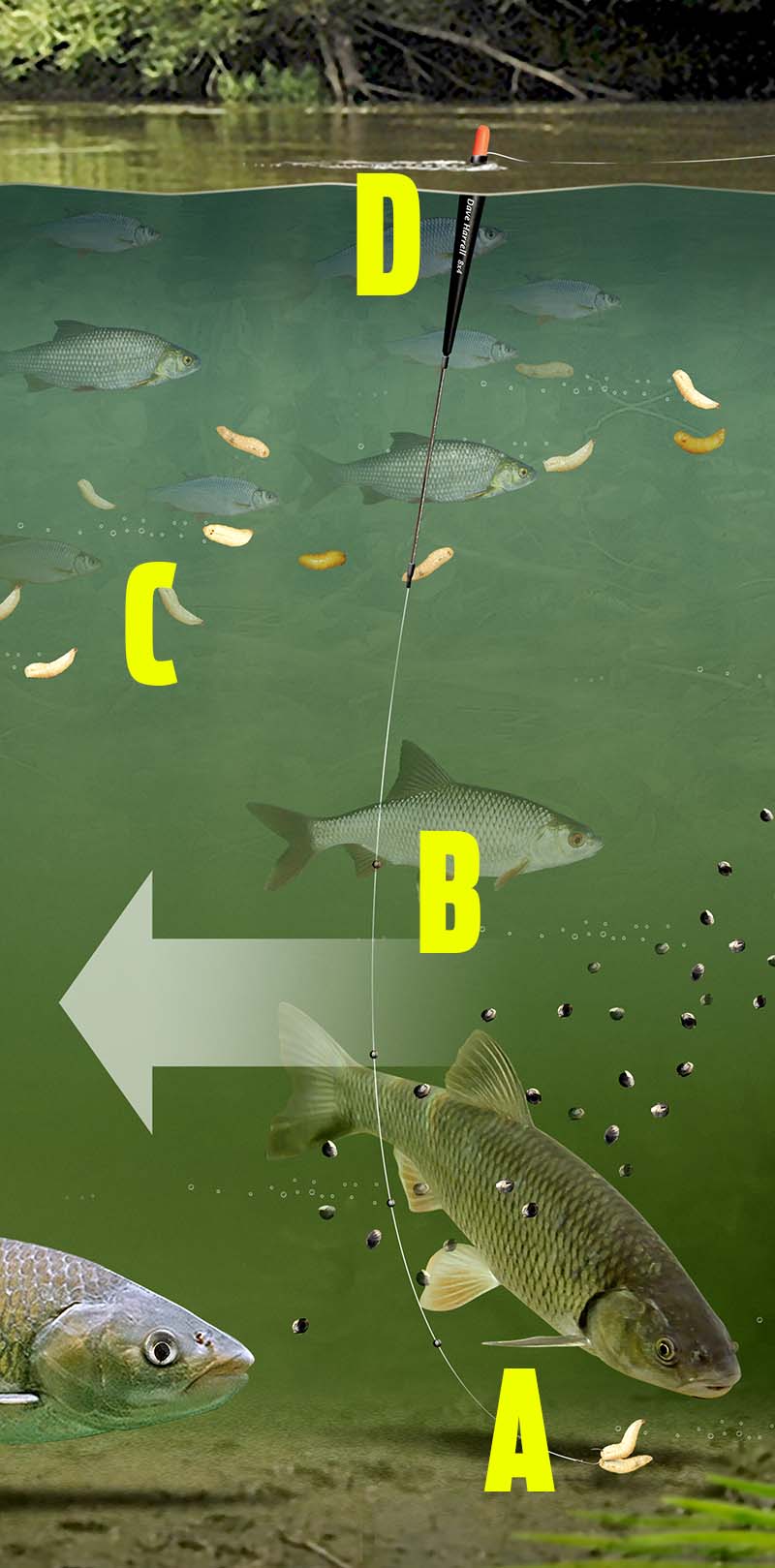How to tie | The rocket feeder carp rig
There are many different ways of catching carp up in the water, but one of the most effective is the Rocket Feeder.
As the name suggests, this is a floating feeder that is open at one end, enabling it to be filled with lightly dampened pellets or groundbait, which should be mixed so that it quickly exits the feeder once cast out.
Unlike other tactics, the Rocket Feeder is ideal for use with larger pellets, such as 8mm baits, enabling the angler to introduce sizable food items – ideal for larger carp. The feeder can also be cast long distances, thanks to its aerodynamic shape, so it’s useful when carp are beyond pellet waggler range.
The shape of the feeder means that it acts as a very effective bolt-rig when a carp takes the bait. In fact, it is essential to use strong line with this tactic to avoid being broken on the take. A minimum of 6lb is recommended.
Set the Rocket Feeder about 4ft above the hook then, as the carp become more accustomed to the stream of bait, move the float stops down so that the hookbait is just 2ft deep.
On heavily stocked carp fisheries the Rocket Feeder is an absolute winner at this time of the year. Get on it now!
Slide a float stop on to the mainline, followed by the Rocket Feeder, and then fix two further float stops to lock it in place
Adjust the float stops to lock the feeder in position. Having two stops below the feeder ensures that it will not move on the cast
The feeder should be locked about 3ft above the end of the mainline
Tie a figure-of-eight knot in the end of the mainline to form a small loop which you will attach the hooklength to
Use a four-turn grinner knot to attach the hook. Use a clear line a this is less visible when fishing up in the water
The hooklength should be 1ft long and attached to the mainline using a loop-to-loop knot. Attach the hookbait using a bait band
The helicopter feeder rig
The helicopter feeder has become a mainstay for a great many anglers fishing for species as diverse as specimen roach, tench and carp.
This rig has two main advantages. It is very tangle-proof, especially when higher diameter line is used for the hooklength and also an effective bolt rig, meaning that most bites will be very positive.
Coupled with a maggot feeder, this is an excellent set-up for big roach. With a larger oval maggot feeder, it lends itself well to fishing for tench. The hooklength should be as short as possible, generally around 3in-6in, which can be quite tricky to tie, but persevere, because the resulting rig is well worth the effort.
The hooklength should be stopped just above the feeder, although not so close that the hook can accidently foul the feeder on the cast. As a general rule, the closer the hooklength is to the feeder the more bites you will get.
This is the ideal rig to tie if you plan to fish a ‘sleeper’ rod while float fishing, because generally the bites are unmissable. For this reason, it pays to use a reel with a freespool facility that can give line when a fish bolts away.
How to tie
Cut off 20cm of Power line. This hooklength should not be too fine to avoid tangles
Tie on the eyed hook using a through-the-eye whipping knot with 12 turns, for a great angle
Thread a Rig Sleeve on to the other end of the hooklength, tapered end towards the hook
Tie on a Micro Rig Swivel using a twice-through-the-eye four-turn grinner knot
Thread a soft Line Stop on to the mainline, which should be at least 6lb to avoid breakages
Thread on the hooklength swivel, followed by a second Line Stop leaving a 5mm gap
Thread another Rig Sleeve on to the mainline. Tie on swimfeeder using a four-turn grinner
Slide the stops and hooklength into position so that the hook rests just above the feeder
How to tie the method feeder rig
Method feeders are a staple among match anglers and, with a few tweaks, can also be used to target big carp, tench and bream.
The only changes you need to make to turn it into a rig capable of landing any carp that swims are to strengthen the component parts and increase the size of the hookbait and loosefeed.
The Method is perfect for ‘runs waters’ or for targeting carp in pressured venues that have seen it all when it comes to rigs.
How to tie the hooklink
Tie on a curved shank hook. We’ve used a palomar knot here, but a grinner is also fine to use.
Thread a micro rig swivelover the point and down the shank, followed by a small hook bead.
Position the hook bead and then attach the bait to the swivel using bait floss or a small bait band.
Tie a swivel to the other end. Make sure it is a snug fit in the base of the frame of the Method feeder.
How to load the method feeder
Put your chosen ingredients into a bait tub. Dampen the comtents and make sure they bind together well.
Place your hookbait in the fat end of the supplied mould and bury it with your Method mix.
Firmly press the feeder into the mould, with the hooklink positioned as shown above.
Remove the frame from the mould. Some frames have push-button releases. You’re ready to cast out!







